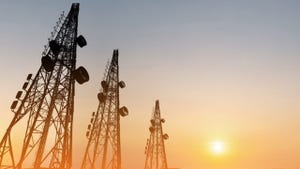Ericsson, Swisscom and Qualcomm do 5G dynamic spectrum sharingEricsson, Swisscom and Qualcomm do 5G dynamic spectrum sharing
Dynamic spectrum sharing (DSS) is all about the smooth transition from 4G to 5G and is an important part of rolling out a 5G network.
November 11, 2019

Dynamic spectrum sharing (DSS) is all about the smooth transition from 4G to 5G and is an important part of rolling out a 5G network.
The incremental 5G progress news has dried up to such an extent this year that telecoms journalists have sometimes been forced to go and find things out, which is a massive hassle. So we’re grateful to Ericsson, Swisscom and Qualcomm for taking one more step towards proper, viable 5G with this thing that they just did.
Specifically the three companies say they collaborated to make the first over-the-air, DSS 5G data call in 31 October in Switzerland. It’s not clear why it took them over a week to announce it, however. Maybe they weren’t sure if it had worked. They had managed a 5G call using spectrum sharing in September, but that was just boring old vanilla spectrum sharing. Now it’s dynamic.
“Ericsson Spectrum Sharing (ESS) allows Swisscom to best leverage the existing frequency spectrum and infrastructure for 4G and 5G customers, depending on their needs,“ said Patrick Weibel, head of 5G program, Swisscom. “Spectrum sharing will ensure that Swisscom can provide extensive 5G coverage to its customers as soon as possible.”
says, “With Ericsson Spectrum Sharing, service providers can reuse their Ericsson Radio System investments on bands currently used for LTE to support a fast introduction of 5G,“ Hannes Ekström, head of product line 5G RAN, Ericsson. “This first ESS 5G data call by Swisscom, on commercial platforms, is an important step to enabling cost efficient, nationwide 5G coverage and services.”
“Coverage is the next killer app for 5G, and we congratulate Ericsson and Swisscom on this significant milestone,“ said Dino Flore, vice president, technology, Qualcomm Europe. “Spectrum Sharing will be a key catalyst for nationwide 5G coverage, helping deliver ubiquitous 5G services to consumers.”
The thinking behind dynamic spectrum sharing is that there’s no point is reserving a bunch of 5G spectrum if there’s hardly any demand for it. So initially a site using DSS tech will be beaming out mostly 4G waves, but as people switch to 5G it can move the dial in that direction.
About the Author
You May Also Like










.png?width=300&auto=webp&quality=80&disable=upscale)


_1.jpg?width=300&auto=webp&quality=80&disable=upscale)